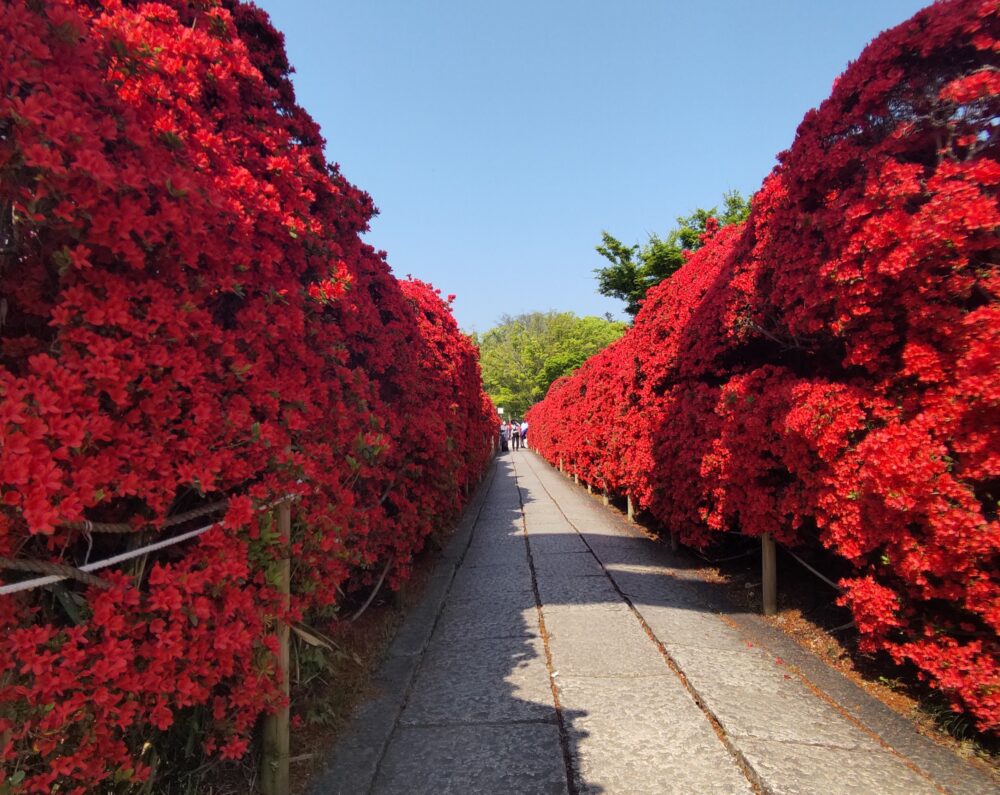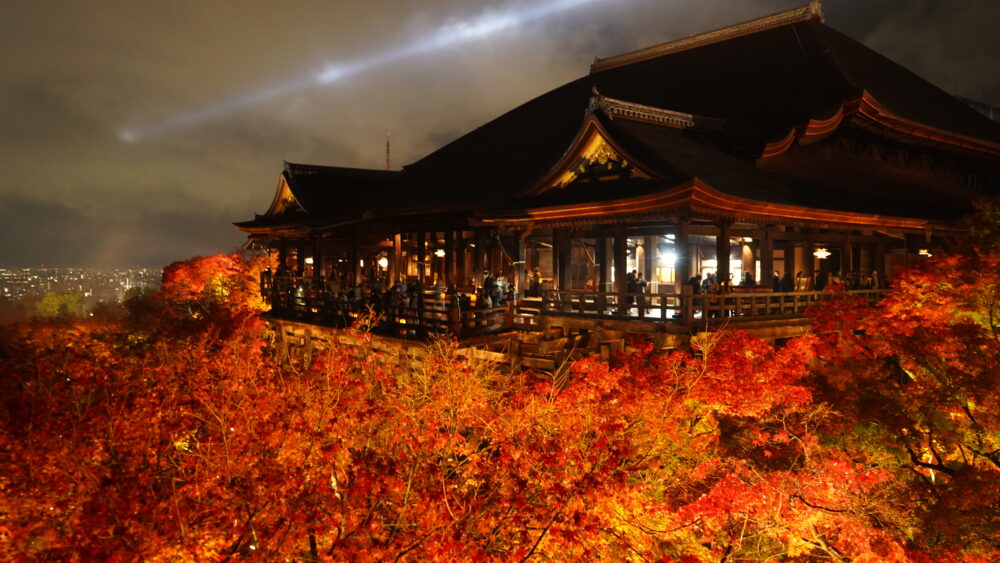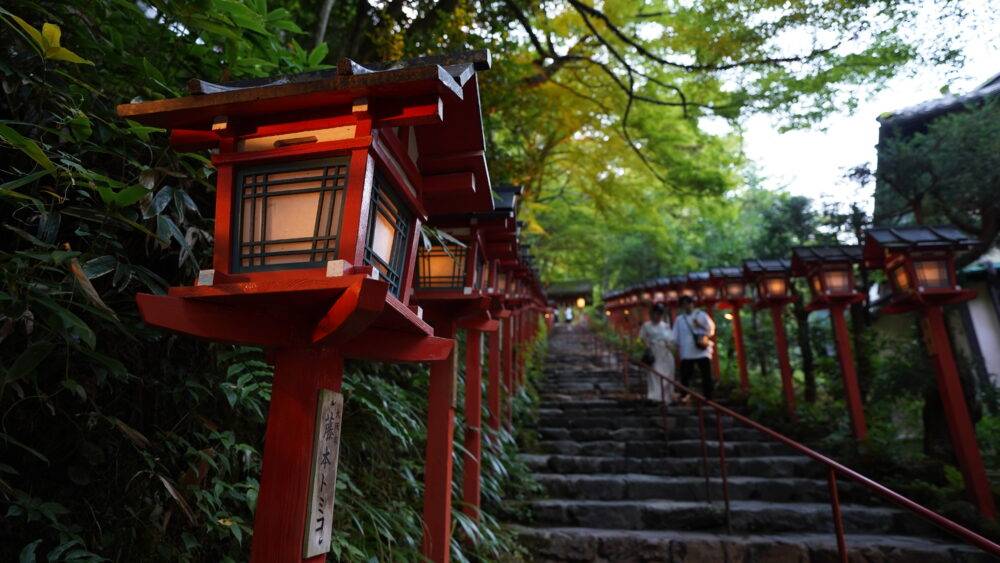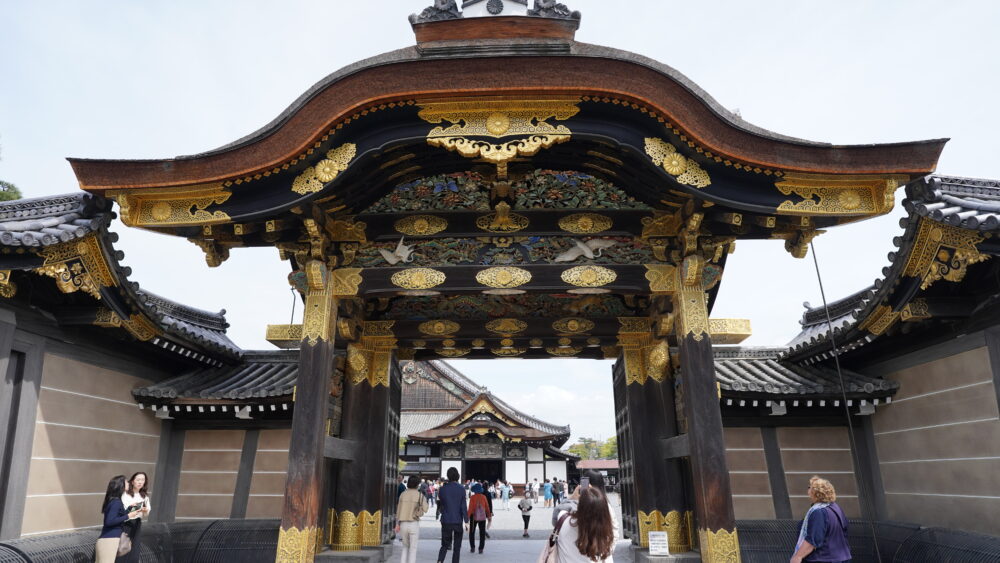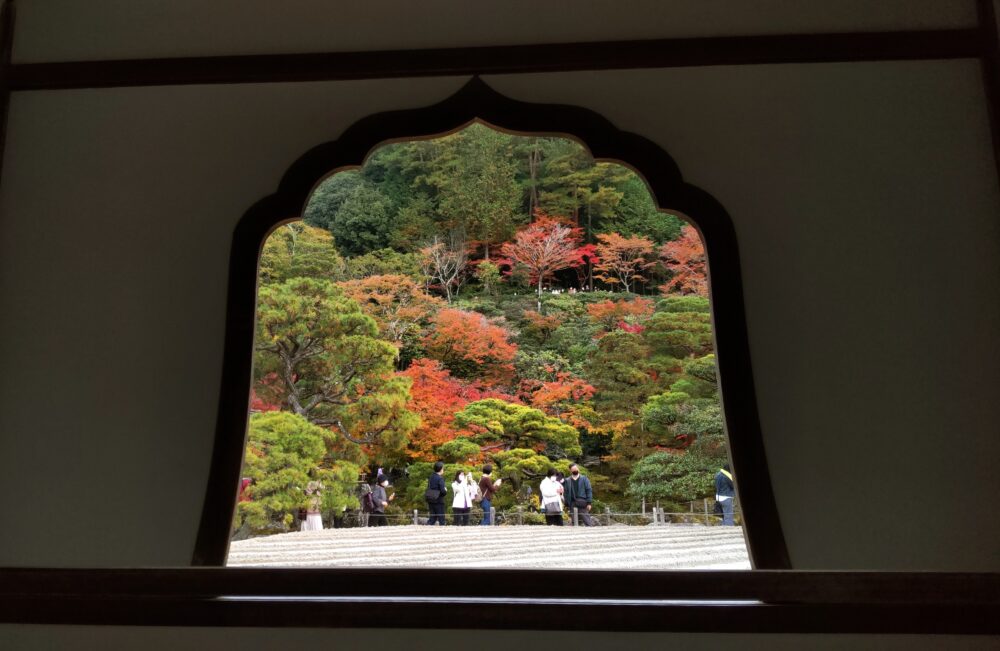Shinsenen | All You Must Know before in 2025
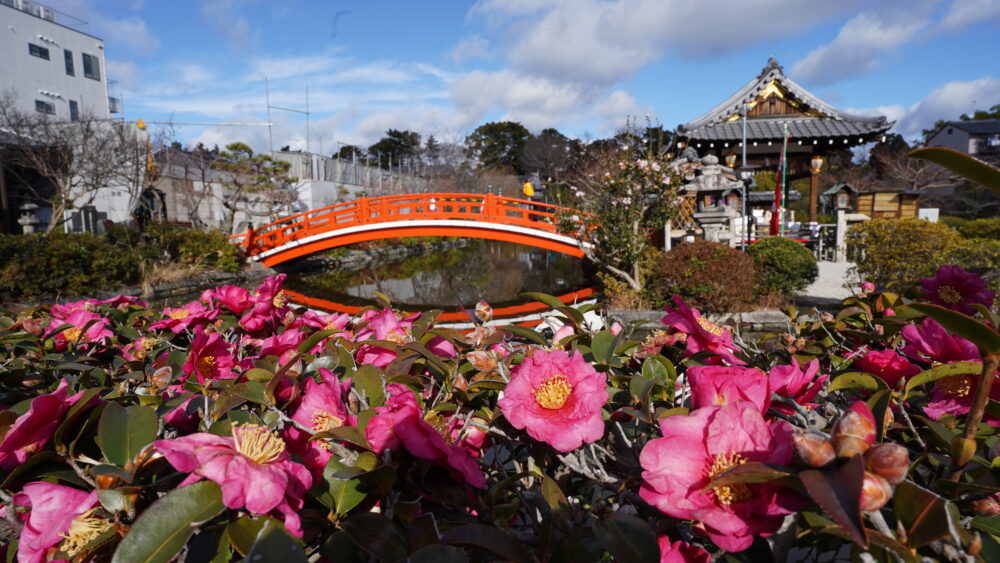
Kyoto has Japanese gardens that bloom with beautiful flowers not only during the spring and autumn seasons, but also in winter, making them popular with travelers.
Shinsenen, located in the heart of Kyoto city, to the south of Nijo-jo castle, has a historic garden, renown for winter flowers; camellias and sasanqua camellias. In addition, Shinsenen has its own charm and attract visitors who are looking for a more tranquil, intimate garden experience in Kyoto. Here is information about Shinsenen to help you understand and enjoy it more deeply.
History
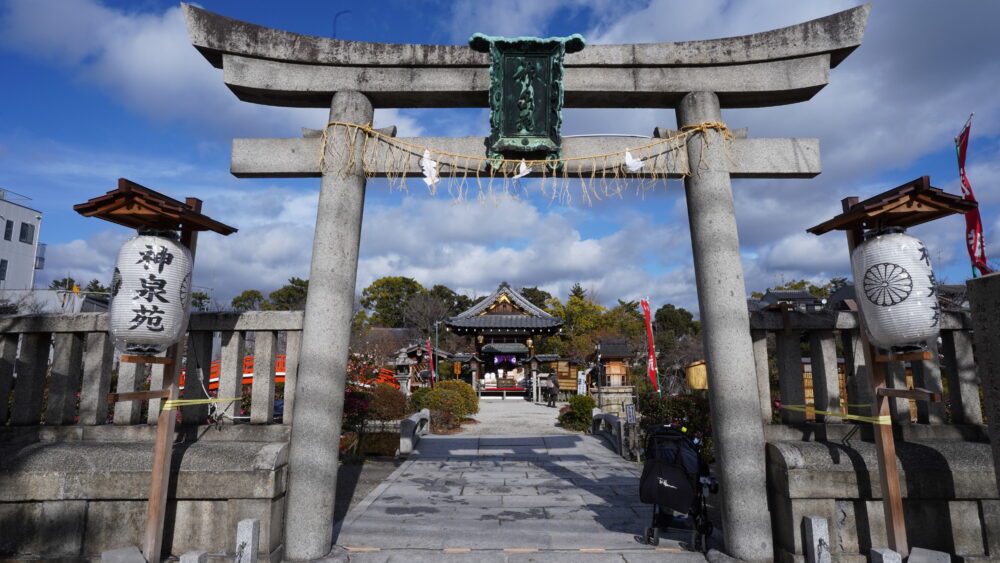
Shinsenen was established in 794 as a private garden for Emperor Kanmu, located southeast of the Daidairi Imperial Palace. The name of Shinsenen comes from “Garden of the Divine Spring”, and successive emperors enjoyed the scenery of the garden from boats floating on the pond of Shinsenen.
In 824, during a period of severe drought throughout Japan, Kukai, the founder of the Shingon school of Buddhism, prayed at the Shinsenen pond. He called upon a young female dragon, “Zenyo Ryuo,” who was worshipped as a rain deity. Zenyo Ryuo brought rain to all of Japan. Since that event, Zenyo Ryuo has been believed to reside in the Shinsenen pond, and a shrine dedicated to her was built there. In 1603, when Tokugawa Ieyasu built Nijo Castle, the north side of Shinsenen was reconstructed to serve as part of the castle’s moat. In 1607, Shinsenen was rebuilt and later became a Buddhist temple of the Shingon sect founded by Kukai.
Currently, Shinsen-en is affiliated with the Toji Temple branch of the Shingon sect.
Features
Shinsenen, which was largely absorbed as part of the land for Nijo Castle in 1603, is only about 4000 ㎡, but it has many attractive features. Although Shinsenen is a temple, within its precincts, there are torii gates and shrines, which originate from Shinto. These structures represent a unique Japanese form of faith that unified Shinto shrines and Buddhist temples.
Hojouju-ike and Houjou-bashi
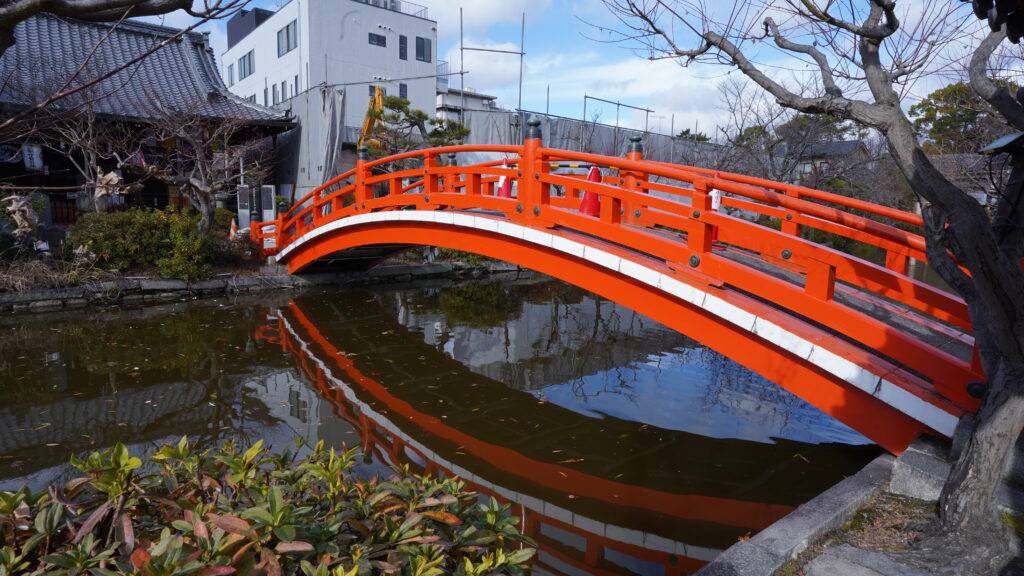
A main pond in Shinsenen is called “Hojouju-ike”. It is believed that the deity of lady dragon “Zenyo Ryuo” resides in this pond. The vermilion bridge, Houjou-bashi, serves as a bridge to the shrine of Zenyo ryuo. This arched bridge ”Taikobashi”, shaped like a half-circle, symbolizes the passage from the human world to the realm of the gods.There is another pond as well, called Shinkyo-ike. It is said that when the person looks at ones reflection in the water of this pond, it reveals ones inner emotions of joy, anger, sorrow, and pleasure. The ponds in Shinsenen originate from a large ancient pond, and currently, some of the water from these ponds is used to fill the moat of Nijo-jo Castle.
Nakajima Island
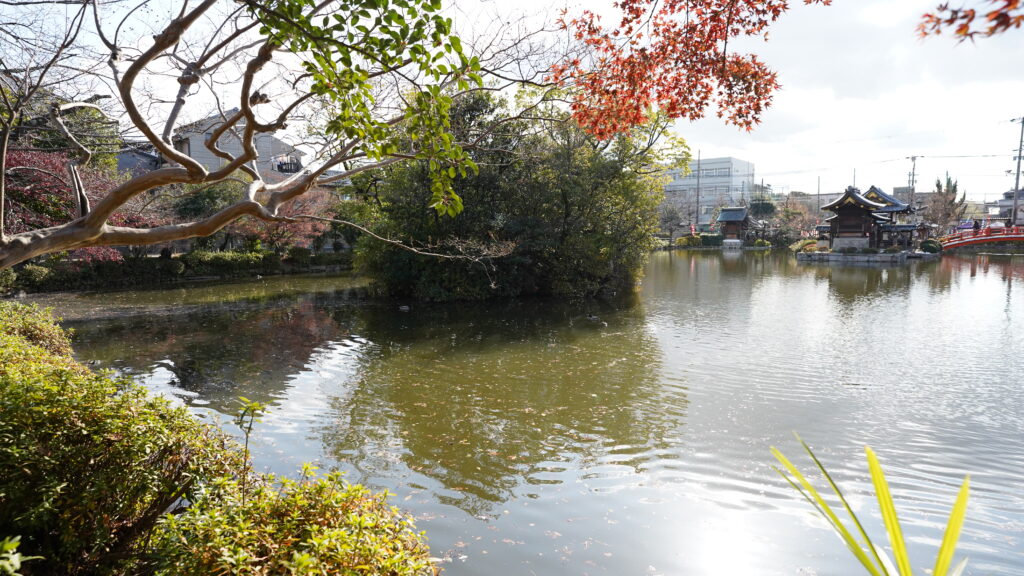
Northwest of Hojo-ike Pond is an island called Nakajima. According to legend, this island floats and gradually moves over time. It is also said that a high-ranking fifth-class heron, a favorite of Emperor Daigo, lived on the island.
Zenyo Ryuo sub-shrine
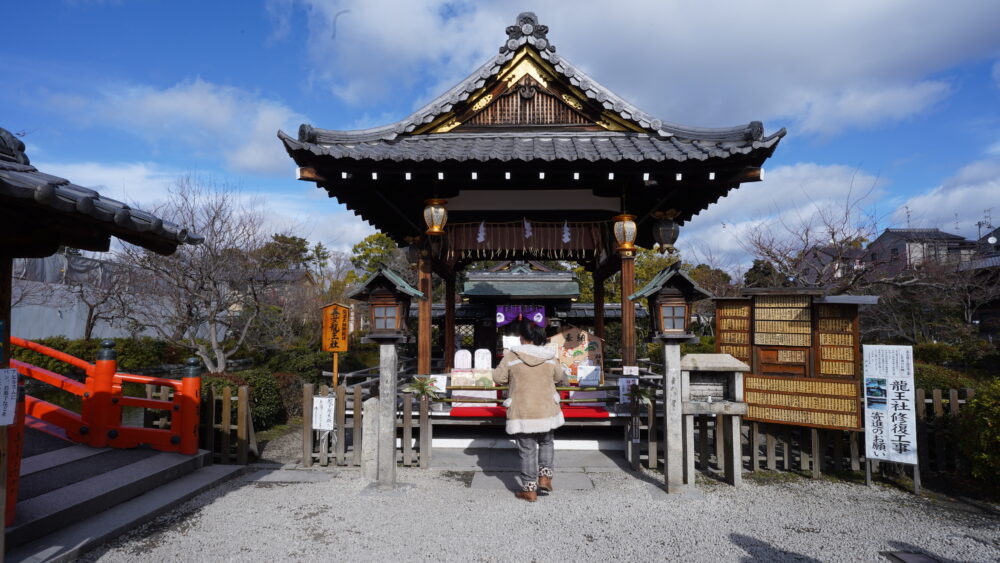
Zenyo Ryuo shrine is enshrined on the central island of Shinsenen. The Zenyo Ryuo is the deity that Kukai summoned from North India to pray for rain. This shrine was destroyed in the fire of 1788 and was rebuilt in 1813.
Ehou sub-shrine
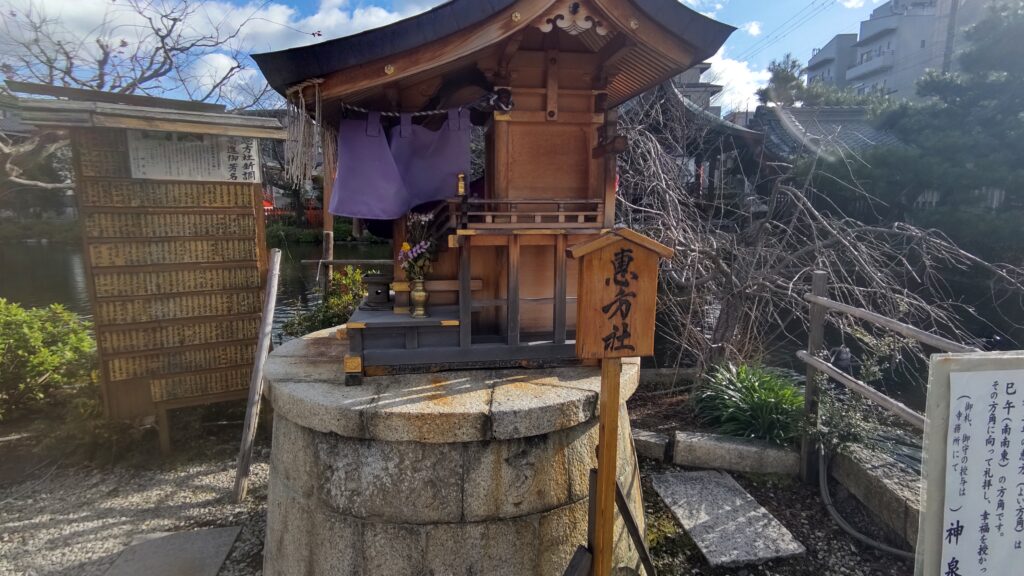
A Ehou sub-Shrine is dedicated to worshipping the deity of fortune, Toshitoku-jin, that resides in the auspicious direction of the year. In Japan, there is a custom called “Ehou-maki” where people eat sushi rolls facing this direction on Setsubun, February 3rd. The direction, which changes every year, is determined based on Onmyodo (the religion of Yin and Yang).
Best season
Winter (late Dec to Mid-Jan )

While many gardens are known for their beautiful spring and autumn scenery, Shinsen is best place to visit in winter. From late December to mid-January, it is adorned with numerous Sasanqua camellias in bloom. Sasanquas are easily trimmed, allowing for a variety of shapes from natural tree shape to square hedges, and they bloom in a range of colors including pink and white. The highlight is the view of the Sasanqua hedges with the vermilion bridge, reflected in the pond, creating a fantastical scene.
How to get there
Shinsenen is a hidden gem and not crowded, but since it’s near Nijo Castle, during Kyoto’s high seasons in spring and autumn, the roads can get congested. Therefore, it’s recommended to avoid using buses or taxis, and instead, travel by train, bicycle, or on foot.
There are several ways to get to Shinsen-en.
- From JR Kyoto Station, take the Yamashiro Line (Violet Line) towards Sonobe and get off at Nijo Station. A leisurely 8 minute walk will take you directly to Shinsen-en.
- If you prefer the subway, take the Kyoto Subway Karasuma Line(Green Line) for Kokusaikaikan from the underground level of Kyoto Station. Transfer to the Tozai Line (Orenge Line) for Ota Jinja at Karasuma Oike Station. Get off at Nijo-jomae sta. From there, it’s a 6-minute walk to Shinsen-en.
- The cycling is also good for some reasons: the roads to Shinsenen are well maintained, there are many rental bicycle stores.
If you’re visiting during the off-season (March, April, November, and December), you can also consider taking a bus or taxi to Shinsen-en.
- A taxi ride from north exit of Kyoto Station to the shrine takes about 11 minutes.
- You can take bus No. 9 or 50 and get off at the Horikawa Oike bus stop. From there, it’s a 5-minute walk.
- Or you can take bus No. 6 or 206 and get off at Nijoeki-mae. From there it’s a 7 minute walk to Shinsen-en.
Information
Open hours
7:00 a.m. – 8:00p.m.
Temple office (for Omikuji, Goshuin)
9:00 a.m. – 5:00p.m.
Entrance fee
Free
Regular holiday
None
Address
166 Monzencho, Nakagyo Ward, Kyoto, 604-8306
Resource
Official site(Japanese only)
http://www.shinsenen.org
